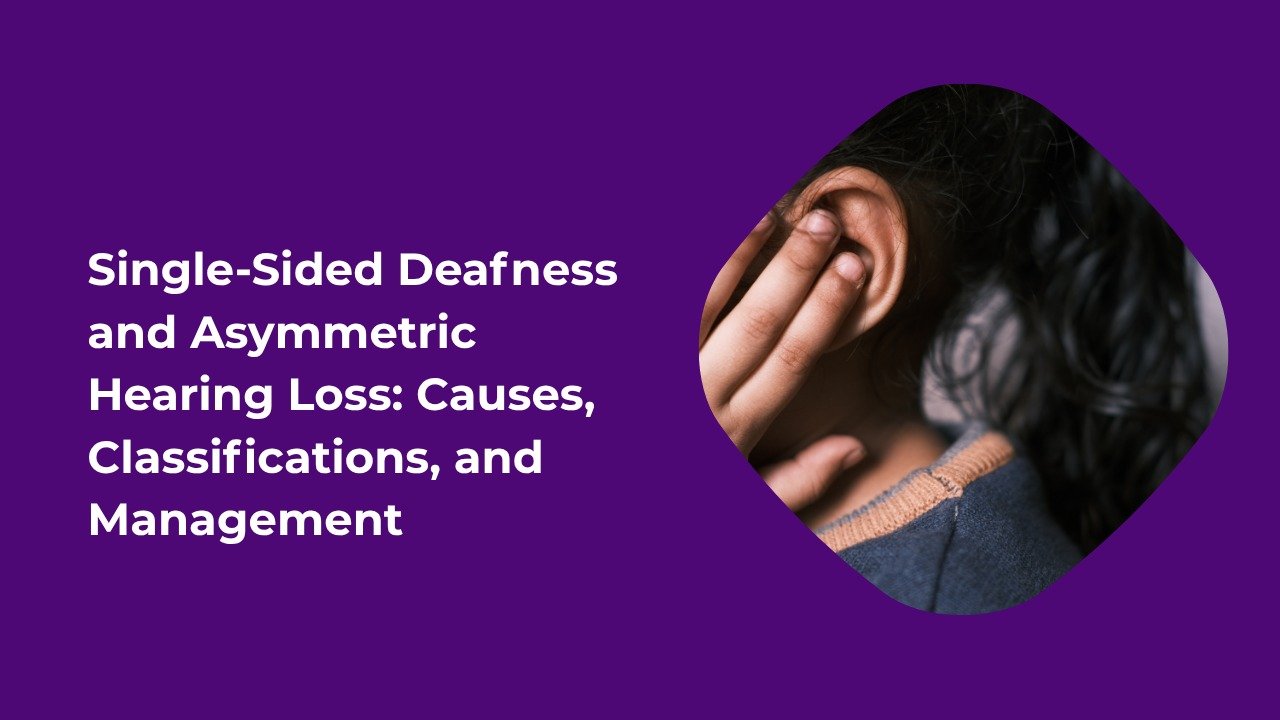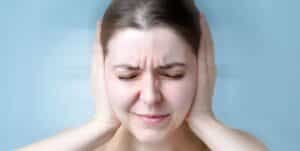What Is Single-Sided Deafness (SSD)?
Single-Sided Deafness (SSD) refers to profound or total hearing loss in one ear, with normal or near-normal hearing in the other. In SSD cases, the hearing in the poorer ear is so limited that conventional hearing aids offer little to no benefit. This condition disrupts the brain’s ability to process sound from both sides, significantly affecting speech perception and sound localization.
Does Binaural Mean Both Ears?
Yes, “binaural” refers to the use of both ears. In SSD, binaural hearing is impaired because the brain receives useful auditory input from only one ear.
Common Causes of SSD
Single-Sided Deafness can result from several medical and neurological conditions:
- Idiopathic Sudden Sensorineural Hearing Loss (SSNHL): Sudden unexplained hearing loss in one ear
- Acoustic Neuroma: A benign tumor on the auditory nerve
- Inner Ear Anomalies: Structural defects of the cochlea or vestibular system
- Cochlear Nerve Deficiency (CND): Missing or underdeveloped cochlear nerve
- Mumps and Viral Infections: Such as congenital cytomegalovirus (CMV)
- Meningitis: Can damage the cochlea and auditory nerve
- Auditory Neuropathy Spectrum Disorder (ANSD): Disrupted transmission of sound from the inner ear to the brain
What Is Asymmetric Hearing Loss (AHL)?
Asymmetric Hearing Loss (AHL) is when there is a significant difference in hearing ability between the two ears, but both ears still retain some level of functional hearing. Unlike SSD, patients with AHL may still benefit from amplification in both ears.
Audiological Criteria: SSD vs. AHL
| Criteria | SSD | AHL |
| Poorer Ear | PTA ≥70 dB HL | PTA ≥70 dB HL |
| Better Ear | PTA ≤30 dB HL | PTA >30 and ≤55 dB HL |
| Interaural Threshold Gap | ≥40 dB HL | ≥15 dB HL |
Effects of SSD and AHL on Daily Life
Both SSD and AHL affect a person’s ability to locate sound sources, hear clearly in noisy environments, and maintain balanced hearing. For SSD patients in particular, the inability to hear from one side can be especially challenging in social, educational, or professional environments.
What Is the Difference Between Bilateral and Unilateral Hearing Loss?
- Bilateral Hearing Loss: Hearing loss in both ears
- Unilateral Hearing Loss (or SSD): Hearing loss in only one ear
Management Options for SSD
CROS Hearing Aids: How They Work
CROS (Contralateral Routing of Signals) hearing aids are a specialized solution for patients with SSD. They consist of:
- Microphone on the Deaf Side: Captures sound from the non-hearing side
- Receiver on the Better-Hearing Side: Transmits the sound to the good ear through a wired or wireless connection
This allows patients to hear sounds coming from the deaf side through their better ear, restoring a sense of auditory balance.
What Is the Physiology Behind CROS Hearing?
While CROS does not restore binaural hearing, it improves access to environmental sounds that would otherwise be missed. The brain receives input from only one ear but perceives a wider soundscape.
Candidacy for CROS Hearing Aids
CROS aids are ideal for individuals who:
- Have total or near-total hearing loss in one ear
- Have normal or mild hearing loss in the better ear
- Frequently encounter situations where sound comes from the deaf side
Example Use Case: A taxi driver with SSD on the passenger side can use CROS to hear customers more clearly.
BICROS Hearing Aids
When the better ear also has some hearing loss, a BICROS system is recommended. It combines:
- Microphone on the Deaf Side
- Microphone and Receiver on the Better Ear Side
This setup allows amplification of both the better ear and the signals coming from the deaf ear side.
Alternatives to CROS and BICROS
Other management strategies for SSD and AHL include:
- Bone Anchored Hearing Systems (BAHS): Transmit sound through bone conduction from the deaf side to the good cochlea.
- Cochlear Implants: May be an option in some SSD cases, particularly when the hearing nerve is intact.
- Assistive Listening Devices: Such as FM systems in classrooms or workplaces.
Clinical Insights
Research supports the effectiveness of CROS and BICROS aids in improving speech understanding, spatial awareness, and quality of life in SSD patients. However, adaptation varies by individual, and hearing care professionals should evaluate each case thoroughly.
Common Questions
Why Is Single-Sided Hearing Loss Difficult?
With one functioning ear, the brain struggles with sound localization and speech clarity in noisy settings. Everyday tasks like crossing the street or conversing in crowds can become difficult.
Can SSD Be Cured?
Depending on the cause, some cases of SSD (like SSNHL) may improve with prompt treatment. In most chronic or structural cases, permanent hearing loss is managed through devices like CROS or BAHS.
Is a Cochlear Implant Better Than CROS?
For select SSD patients, especially those with poor speech discrimination, cochlear implants may offer better binaural hearing restoration than CROS. However, CROS remains a less invasive, non-surgical first-line option.
External Resources
- Hearing Loss Association of America
- American Academy of Audiology
- National Institute on Deafness and Other Communication Disorders
Final Thoughts
Single-Sided Deafness and Asymmetric Hearing Loss may not be as widely recognized as bilateral loss, but they significantly affect everyday hearing. With early diagnosis and proper hearing solutions like CROS or BICROS systems, individuals with SSD or AHL can regain better awareness, communication ability, and quality of life. Always consult with a certified audiologist to determine the most appropriate management approach for your hearing profile.





